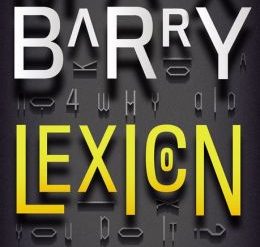
This book is a work of fiction inspired by real events and real people.” So writes James McBride in an author’s note that precedes the text. He continues: “It draws upon the individual and collective experiences of black soldiers who served in the Serchio Valley and Apuane Alps of Italy during World War II.” They were among the storied “Buffalo Soldiers” of the US Army’s segregated 92nd Infantry Division. The division garnered thousands of honors, including two Medals of Honor, 208 Silver Stars, and 1,166 Bronze Stars, yet many of the white officers who commanded the unit circulated false reports of the troops’ poor performance. In Miracle at St. Anna, an engrossing account of the division in action in Italy late in 1944, James McBride brings that reality to light.
Estimated reading time: 6 minutes
Jim Crow is alive and well on the front line
McBride’s story recounts the experiences of the four surviving soldiers of a squad in action in the Serchio Valley in December 1944. Privates Sam Train, Bishop Cummings, and Hector Negron, and Second Lieutenant Aubrey Stamps barely escape with their lives when the racist white captain directing artillery fire from division HQ against the Germans angrily refuses to support their company as they face murderous enemy fire. Instead, he targets the Germans facing a white detachment. The company is, in the language of the times, cut to pieces. Caught alone on the wrong side of the Serchio Valley, the four men hole up in the tiny village of St. Anna.
The massacre depicted was real
The novel relates their experiences as they enter the local drama among the quarrelsome villagers. While waiting for weeks for reinforcements, they will be forced to deal with feuding local folk. There are Fascists among them, as well as a contingent of partisans. And while all this transpires, SS troops carry out a massacre at the village church of 560 people, mostly women and children. The event is accurately based on an event of that description in Sant’Anna di Stazzema on August 12, 1944.
Miracle at St. Anna by James McBride (2001) 324 pages ★★★★★

Four hapless Black soldiers in World War II
Train, Bishop, Hector, and Stamps represent a cross-section of the African-American population in the 1940s.
- Stamps, the lieutenant, is a Northerner and a graduate of Howard University, a man far more competent than most of the racist superior officers he must obey. (Commanding Black soldiers was regarded as undesirable duty, and most avoided it.)
- Hector is Puerto Rican and regards himself as wrongly placed in a Negro unit. Though illiterate, he speaks three languages—Spanish and English, of course, but also Italian, which he learned growing up in New Jersey in an Italian neighborhood.
- Bishop is a hustler and card-sharp, a nonbeliever who set himself up as a preacher in Kansas City to gain a comfortable life the easy way.
- Train is a farm boy, a mountain of a man at six-and-a-half feet and 275 pounds but gentle and meek. He is “slow,” clearly of far below average intelligence. (This was not uncommon in the World War II army.)
Stamps, Bishop, and Hector all seethe with fury at the racism of the men who command them. Train is merely deferential and worries that the others’ resistance will cause trouble for all of them.
The commanding general was a racist
I can’t tell whether any of the four central characters are based on real-life individuals. But there is at least one character in the novel who is. The commander of the 92nd Division is a certain General Allman, a classmate of US Army Chief of Staff General George C. Marshall at the Virginia Military Institute. “Allman didn’t think coloreds were qualified to command, and he said it.” Often. In reality, the 92nd’s commanding officer was Maj. Gen. Edward Almond, who really had been a classmate and friend of one of the principal strategists of the Second World War.
Marshall was never known to base any decisions on race. And it was he, as Secretary of Defense, who pushed for the integration of the armed forces following the war. However, Almond, was clearly a product of Jim Crow Virginia. He signed off on an unprecedented performance report assembled by white senior officers about the 92nd Division that blamed its failures on the troops, not their commanding officers. Almond wrote in his cover letter, “The Negro is a useful individual; he is an American citizen, he should be employed in the defense of this nation, but to expect him to exercise characteristics that are abnormal to his race, is too much and not recommended by me.” The Black soldiers in World War II could hardly have had a worse commanding general.
About the author

An accomplished musician, James McBride (1957-) received the 2013 National Book Award for his novel, The Good Lord Bird. More recently, he published another hugely successful novel, Deacon King Kong. Miracle at St. Anna was the first of his novels and the second of his seven books to date. McBride is a Distinguished Writer-in-Residence at New York University. He holds a BA degree from Oberlin College and an MA in journalism from Columbia University. McBride’s African-American father was a preacher and his Caucasian mother a Jewish immigrant from Poland. He has three children with his ex-wife and lives in New York City and rural New Jersey.
For related reading
This is one of The 20 best books of 2022.
I’ve also reviewed three other novels by James McBride:
- The Good Lord Bird (American history, laughing all the way)
- Deacon King Kong (Unforgettable characters in this delightful new novel)
- The Heaven and Earth Grocery Store (Is this the Great American novel?)
For a nonfiction study of the role of Black people in the war, see Half American: The Epic Story of African Americans Fighting World War II at Home and Abroadby Matthew F. Delmont (African-Americans in World War II).
You might also enjoy:
- The 10 best novels about World War II
- 12 great war novels reviewed here
- 7 common misconceptions about World War II
- 20 most enlightening historical novels
- Top 10 great popular novels reviewed on this site
And you can always find my most popular reviews, and the most recent ones, plus a guide to this whole site, on the Home Page.


























